 Pest
Pest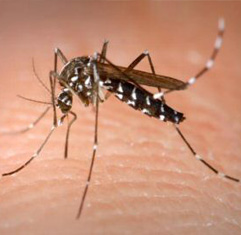
Various virus diseases are spread by mosquitoes and today, they continue to be a problem every where in the world. Mosquitoes can transmit deceases such as Malaria, dengue, chickengunia and yellow fever etc. Mosquitoes are of many species, but most have at least one point in common; their immature stages are found in stagnant water. They do not require breeding places of large area. An open rain water barrel, an old watering channel, tin cans containing rain water; all such places provide suitable breeding ground.
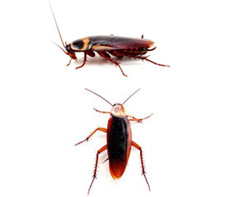
Three species of cockroaches are common: the American Cockroach, German cockroach, and oriental cockroaches
Cockroaches are known carriers of serious diseases, such as, Tuberculosis, Cholera, Leprosy, Typhoid, salmonella, dysentery, gastroenteritis and other stomach complaint organisms. They adulterate food and spread pathogenic organisms with their feces and defensive secretions. They are very active at night or in dark places. They destroy food, damage fabrics and book-bindings and contaminate the materials over which they crawl by their excreta.
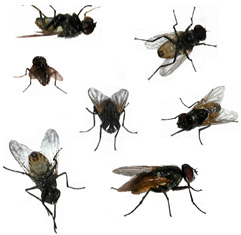
The housefly very broadly dispersed around the globe and, as the name implies, is a cosmopolitan companion of humans and domestic animals. They thrive both indoors and out, and feed on sewage, food remmants, excrement, dead animals and organic waste products, their favorite food though is horse manure.
Flies can transmit diseases like diarrhea, cholera, dysentery, eye infection and food poisoning etc.

Ants generally become a problem in houses and other buildings when their nests have become disturbed after rain, or conversely, during dry weather. Houses are invaded by several kinds of Ants, both the small and large red ants, and small and large black ants, the large black ants are trouble source in houses, they are social insects, and live in colonies, they have a well defined caste system with different duties. It consists of the female (queen) laying eggs, then the workers, soldiers, larvae and pupae.
The ants usually seen in pest situations are the workers, the reproductive are much less often seen. Workers ants spend most of their time constructing, enlarging or repairing the nest and in gathering food. They are known to carry aphids to plants, or injure the plants directly, either by feeding on them only keeping the area around their nest base. Indoor ants may nests in cracks in the wall, beneath cracked basement floors, behind baseboards and in decayed or rotting house timbers.
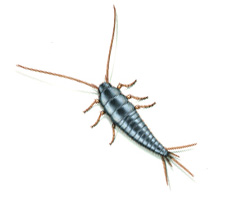
Wingless insects with a silvery sheen, has long antennae and sharp, rapid movement. It avoids light and it can climb only rough vertical surfaces and is found in damp, dark places, books, washbasins etc. It feed on material containing starch such as bindings in books, wallpaper glue and sometimes linen, cotton and artificial silk.
Silverfish are a starch feeder they damage (eat) fabrics, glues and other organic materials. They may also damage silk and some synthetic fabrics, but they usually avoid woolens
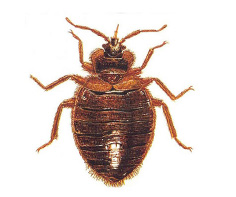
They are parasitic insects infecting mankind for more than 3500 years. The most common species is lectularius Cimex, which is better adapted to human environment. Bed bugs inject their victims with their saliva, which contains a numbing agent, like Novocain. They drink until they become engorged with a person's blood - crawling away satisfied - until the next night.
The bed bugs are an insect of nocturnal habits. Feeding on blood by night and hiding away in various parts of the room by day.
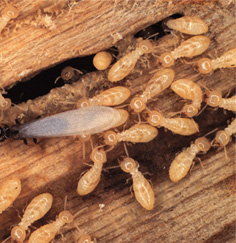
The termites commonly found are called Subterranean Termites because they live underground. When it comes to destruction of structures they are some serious pests. Termites are extremely well organized and they can find a way inside any structure, regardless of its construction. If left untreated they can in a course of time penetrate through concrete construction and can find entry into the building. Then will destroy any thing which will come into their path in search of food. Termite’s food consists of wood and other cellulose products such as paper and cardboard.
Termite is the most destructive pest known today by human begins. There are three categories of termite’s i.e. dry wood termites, damp wood termites and subterranean termites. Subterranean termites are the main culprits, causing major structural damage to domestic and commercial buildings in India. Subterranean termites live in underground colonies from where they infiltrate into the building through tiny cracks and crevices. A gap of just 0.5mm is enough for them to gain entry. They construct mud tubes from their nest to food source. These tubes are sure signs of infestation. Once they gain entry, they work quickly and silently, moving in the mud shelter tubes and destroy woodworks, furniture’s, paper products and any articles having cellulose base in the search of food.
Ability to secrete an acid that dissolves concrete, steel, lead, copper, and tiles.
A colony can consume tree lbs. of wood per day and often more
A CBS constructed, 2000 sq.ft. home will be condemned in approximately 24months under siege from termites.
Guaranteed treatment of termites can be carried out by doing Pre-Construction Anti-Termite Treatment for building under construction and post construction Anti-Termite Treatment for existing building.
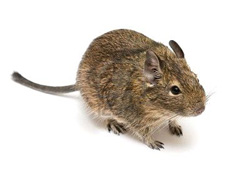
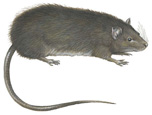
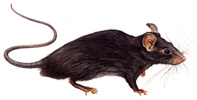
Rodents create a huge problem to mankind due to its sheer numbers. It multiplies fast and eats a good part of human food and destroys valuable equipment by cutting wires etc in storage places, homes, factories hospital, and commercial buildings. There is no place is rodent proof.
There are three common varieties of Rats Found around.
1. Common House Mouse
2. Roof Rat (Black rat)
3. Bandicoot Rat (Sewer rat)
Control of rats is very essential, because they may spread several diseases like Rat-Bite Fever, Plague, salmonella and leptospirosis which is found in their urine. Rodents, primarily rats and mice are a public health threat.
» Rodents can transmit the diseases by contaminating our food supply. They can also damage structures through their biting or chewing. Rats can chew through wood, aluminum, cement and sheet rock.
» Rats are most active shortly after sunset and before dawn.
» They have hairs on their body that are attached to sensory nerves that help them to sense their environment. Hearing is well-developed enabling rodents to hear in sonic and ultrasonic ranges.
Copyright @ 2014. Pestoline . All Rights reserved Powered by Softemart Technolabs